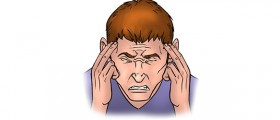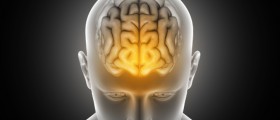
Introduction to Migraines
Migraine represents a debilitating medical condition predominantly characterized by significant headache that lasts for hours or even days. The condition is chronic and it is estimated that it affects women more than men. Symptoms are rather severe and linger for a longer period of time so that a person usually seeks a dark and quiet place to be isolated from all stimuli that may increase the intensity of the condition.
Even though there is no definitive cure for migraine the symptoms can be partially alleviated with certain medications. The drugs can also reduce the frequency of attacks.
What Are Symptoms of Migraines?
Migraine headache typically affects one side of the head (it is unilateral). It may linger for 4 to 72 hours and is generally pulsating. Apart from severe headache patients commonly complain about additional problems such as nausea, vomiting, increased sensitivity to light (photophobia) and other stimuli.
In many cases before the very attack of headache patients experience so called prodrome phase. This characteristic introduction to migraine is characterized by a variety of symptoms such as constipation, diarrhea, food cravings, drowsiness, depression, hyperactivity or irritability and lasts for approximately one or two days before the onset of the headache.
Furthermore, around one-third of all patients develop an aura prior the the attack. The aura is another warning sign of a migraine attack. Auras are most commonly visual but they may also occur in a form of sensory, motor or even verbal disturbances.
A visual aura develops as as consequence of an electrical of chemical wave that moves across the visual cortex of the brain and such changes can be visualized with the assistance of functional MRI. Visual aura can start in a form of a small hole of light and lasts for approximately 10-30 minutes. In some cases visual aura develops in a form of bright geometrical lines or shapes in one's visual field. Some patients report an aura as bright spots or flashes. What is more, some people can experience a partial loss of vision called scotoma.
A sensory aura develops in a form of tingling in one limb or numbness that may affect the entire arm. These sensations last for 10-20 minutes and can also spread to one side of the face as well as the tongue.
A dysphasic aura is a form of migraine introduction that leads to transient speech and/or language problems. And finally, in hemiplegic migraine muscles of the limbs or the face on one side of the body become weak.
Apart from occurring before the very headache an aura can also linger throughout the migraine attack. And finally, after migraine is completely gone a person usually feels washed out, very tired and needs plenty of time to rest.













-Symptoms,-Diagnosis,-Treatment_f_280x120.jpg)

-in-Multiple-Sclerosis_f_280x120.jpg)
Your thoughts on this
Loading...